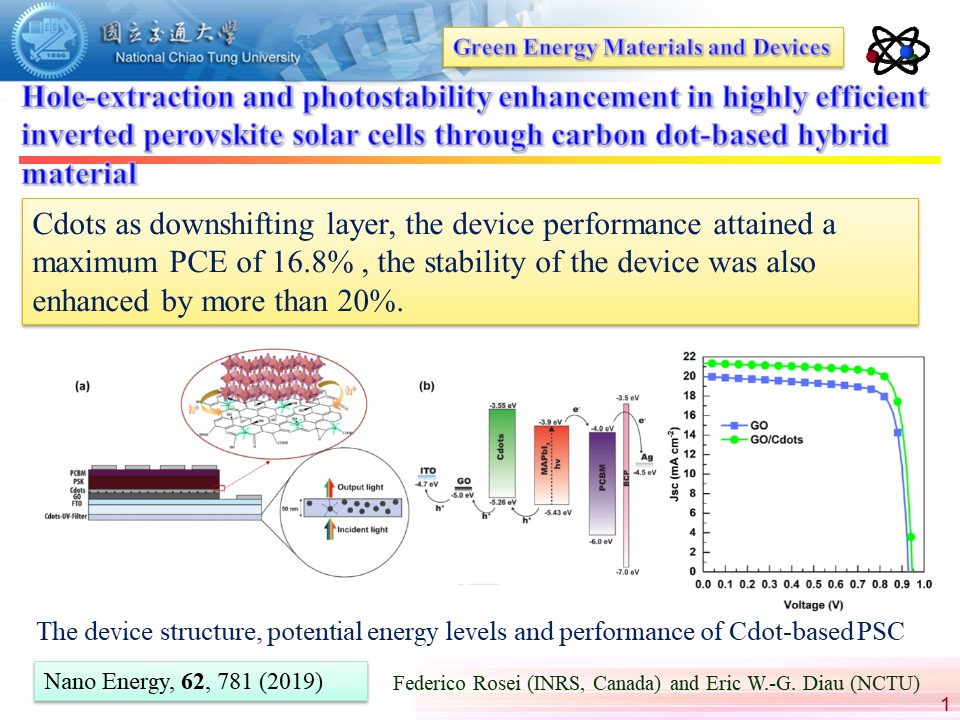

Hole-extraction and photostability enhancement in highly efficient inverted perovskite solar cells through carbon dot-based hybrid material

We report the effect of the integration of carbon dots (Cdots) in high performance inverted planar heterojunction (PHJ) perovskite solar cells (PSCs). We used Cdots to modify the hole-transport layer in planar PSC devices. By introducing Cdots on graphene oxide (GO) as hole-transporting layer, the efficiency of the PSC improved significantly from 14.7% in the case of bare GO to 16.2% of the best device with optimized Cdots content. When applying Cdots with an engineered absorption in the UV range as downshifting layer, the device performance was further improved, attaining a maximum PCE of 16.8% (+14%); the stability of the device was also enhanced of more than 20%. Holes were extracted and transferred to the conductive substrate more efficiently in the presence of Cdots, thus delaying charge recombination. Photoluminescence (PL), transient PL decays and transient photovoltage (TPV) decays investigated the charge-transfer kinetics and proved the retardation of charge recombination. This work reveals an effective enhancement of the performance of planar PSCs by using Cdots/GO as hole transport layer material.
*Daniele Benetti, Efat Jokar, Che-Hsun Yu, Amir Fathi, Haiguang Zhao, Alberto Vomiero*, Eric Wei-Guang Diau*, Federico Rosei*, “Hole-extraction and photostability enhancement in highly efficient inverted perovskite solar cells through carbon dot-based hybrid material”, Nano Energy, 62, 781 (2019).
Strategies to improve performance and stability for tin-based perovskite solar cells

Considering the theoretical limit on device efficiency for tin based perovskite solar cells (PSCs) to be ∼33%, there is much room for further performance improvement if the problems can be resolved according to the approaches discussed in this paper. This perspective reviews the developments of tin-based PSCs during the period 2014−2019 based on two organic cations (methylammonium vs formamidinium) and two device architectures (normal vs inverted) with the strategies of using co-cations and co-additives. Unlike their lead-based analogues, tin-based PSCs suffer from the problems of Sn2+/Sn4+ oxidation and film formation. The current best cell is based on an inverted planar FASnI3 device with guanidinium as co-cation, SnF2 as additive, and ethylenediammonium iodide as co-additive, which attains record efficiency near 10% with great stability. The device stability and performance might be further improved upon introducing bulky organic cations with a suitable coadditive to form a hybrid 2D/3D crystal structure.
Eric Wei-Guang Diau,* Efat Jokar and Mohammad Rameez, “Strategies to improve performance and stability for tin-based perovskite solar cells”, ACS Energy Lett., 4, 1930 (2019).